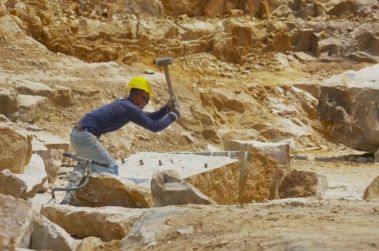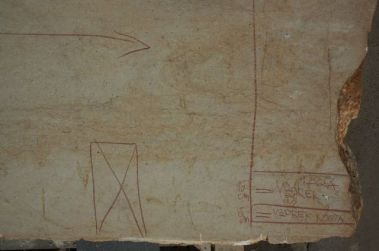An Old or a New Bridge? – Replacing the Sandstones in the Bridge Parapet
The largest discussion time was allowed for the way the repairs would be carried out, for obvious reasons. From this time, the most was taken up by the discussion whether the replacement of the sandstone blocks was justified or, alternatively, the quality of the used sandstone from Kocbeře quarry. The investor and contracted parties representatives have strongly rejected the statement that “selecting stones to be replaced was carried out without a plan, without requirements set by the National Historical Institute if any and to a rather large extent”. Defining the precise dimensions of sandstone blocks which request immediate replacement can be done thoroughly only in the course of repairs. For this purpose, a board was established whose members were also the representatives of the National Historical Institute. It passed decisions on replacing every block one by one by way of agreement. The fact is that as compared to the original plan, more blocks are being replaced nowadays. It is however rooted in the request of the general bridge repair plan. Blocks with a shorter life (up to 30 years) are being replaced so that the finished project will pass to the next generations in a state that corresponds to the invested financial resources and, above all, human effort. Sandstone from the East Bohemian Kocbeře quarry was then chosen by the board on purpose as the best possible alternative available. The decision was passed based on the physical and mechanic parameters and the resistance to weather conditions. Also the material likeness to be maximal (the colour, above all) to the original sandstone was an issue.


